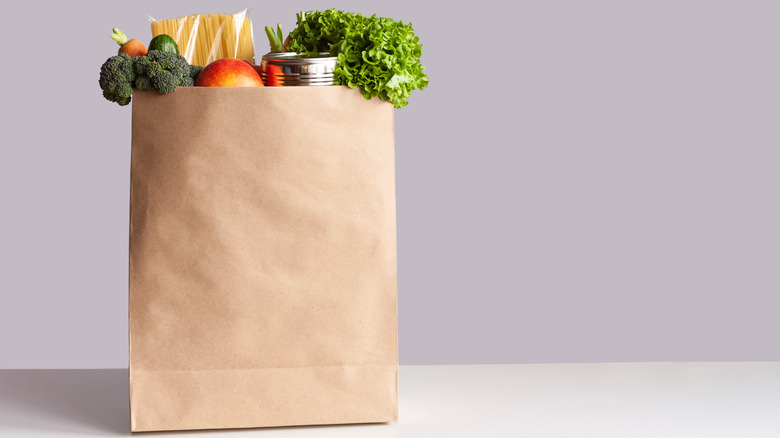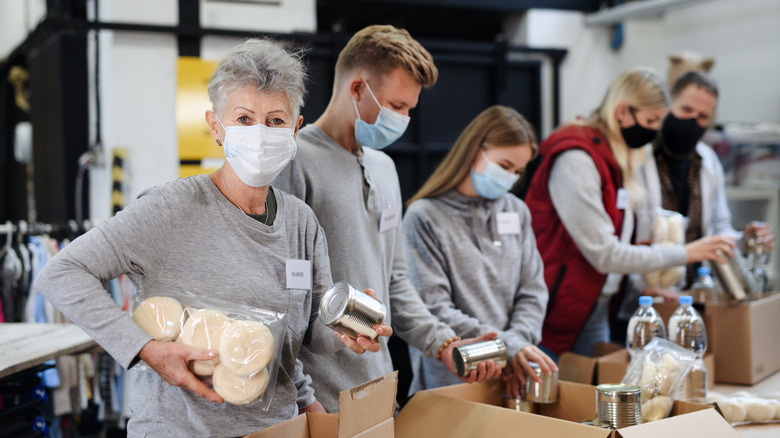The Worrisome Problem Food Banks Are Facing Nationwide
During the pandemic, food banks took on a bigger role in many U.S. households than ever before. In fact, according to a recent report by Feeding America, food bank traffic still hasn't returned to the numbers it saw before the pandemic. In 2021, it says, 53 million households relied on food banks. Now, though, demand is higher than ever at food banks nationwide, but inflation isn't just hitting U.S. households – it's making it harder for food pantries to help their communities.
As folks bear the brunt of the highest inflation in 40 years (per CNN), the motivators for demand aren't going anywhere. In addition to rising food costs, skyrocketing gas and rent prices are leaving many wallets dry simply after covering the essentials for living. Zuani Villarreal, senior director of communications at Feeding America, describes the fallout as inherently cyclical. "Many families will pay one bill one month, delay other bills so that they can still have money left over for food," Villarreal says, via Yahoo! News. "And it's just that game of paying this bill this month, the next one catching up on that." Now, 80% of food banks are seeing consistent or increased traffic month-to-month, according to Feeding America. Here's what that looks like for food banks.
Supplies are scarcer, and demand is rising
This has been an issue since at least June, when Feeding America president Katie Fitzgerald described the state of food pantries as a "drumbeat of increasing demand, month over month," via NPR. Christopher Tan, President and CEO of the Foodbank of Southeastern Virginia and the Eastern Shore, said food donations were coming in less often than ever as "grocery stores got more efficient with online orders during the pandemic, so they don't have as much extra to give." According to the USDA, as of 2020, 38.3 million people in the U.S. were food insecure, and 9.4 million adults were experiencing "low food security." Judging by the increasing financial stressors, these numbers appear to be growing. Luckily, several organizations seem to be jumping in to help.
Last month, international food aid provider Cargill dropped a $4.9 million donation to Feeding America to help food banks nationwide build refrigerated protein-pack rooms. Many food banks, it says, have been experiencing a shortage of protein sources due to inadequate refrigeration capabilities. The University of California even recommends that food pantries become a regular fixture on college campuses due to the widespread epidemic of student food insecurity and consistently-rising university meal plan costs (via an article published in the Journal of Nutrition Education and Behavior). Looking forward, one way Villarreal says the federal government can help its country's food pantries is by working to reduce food waste. Perhaps collectively this is our next project to ending food insecurity.

